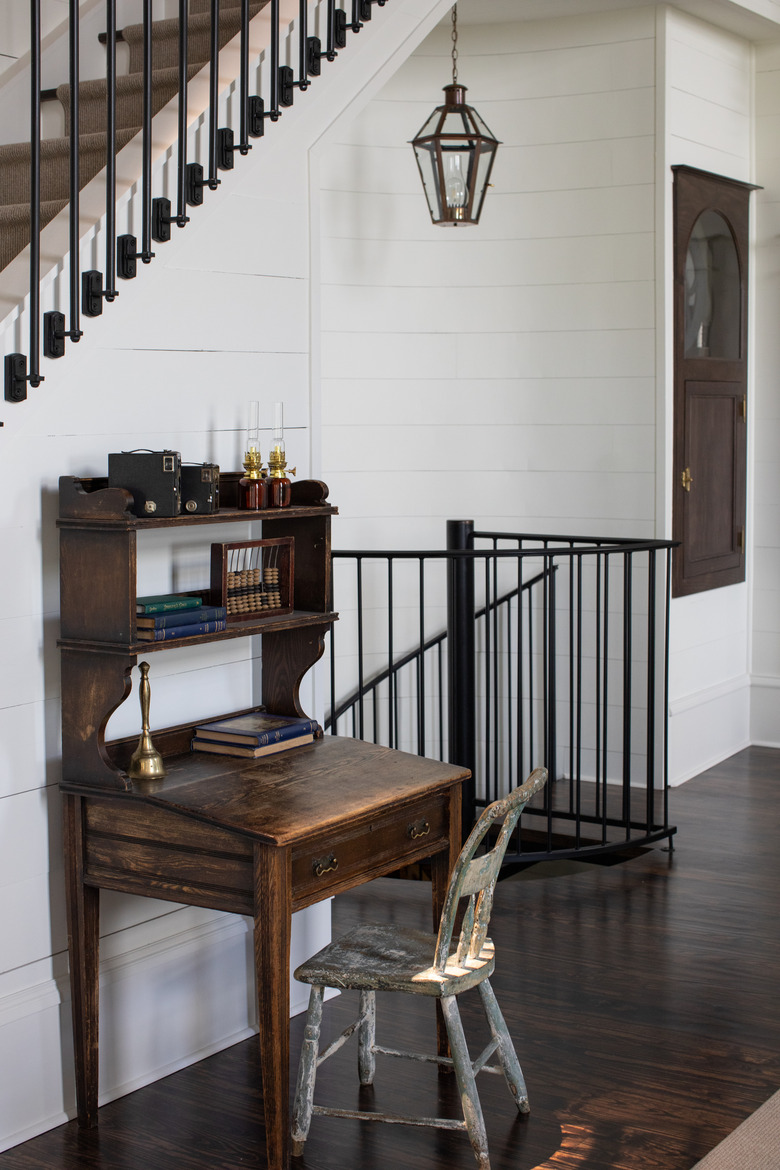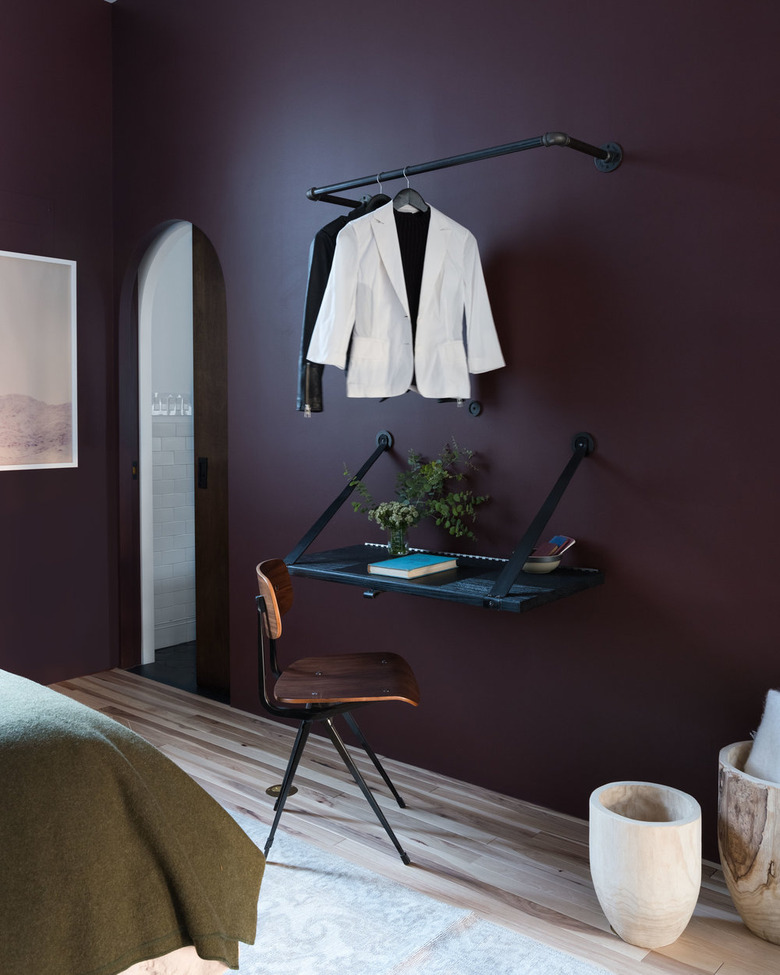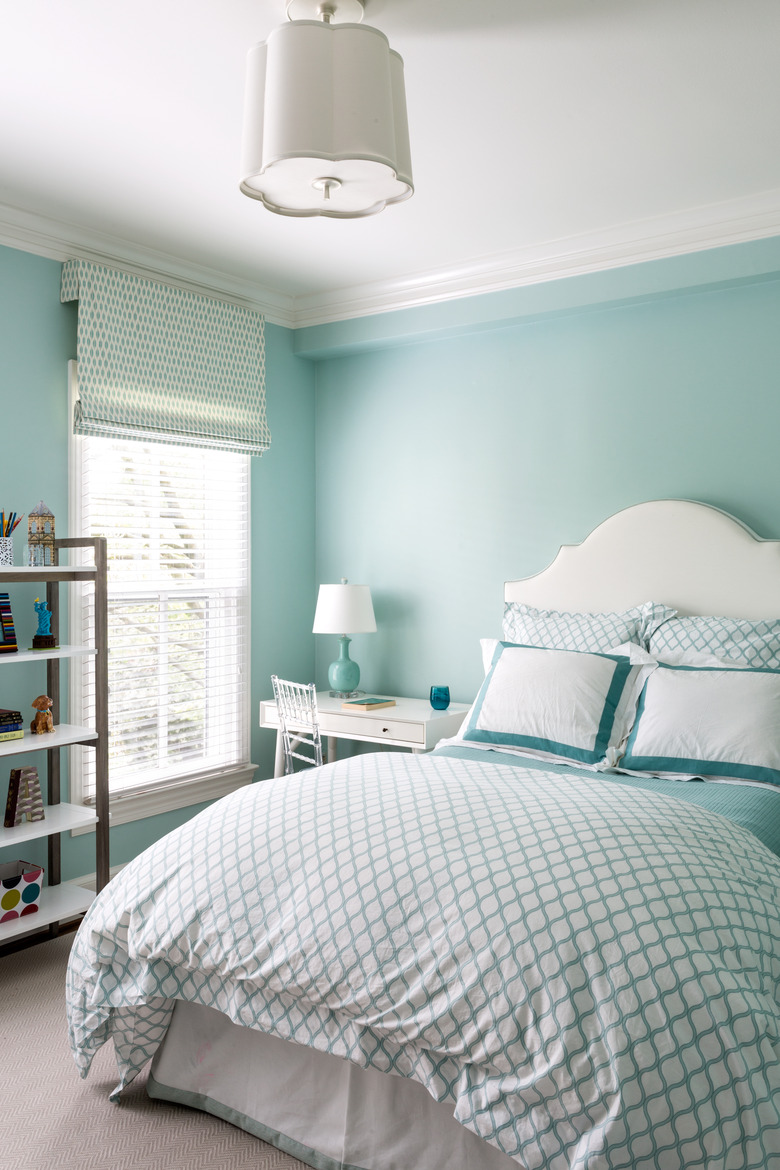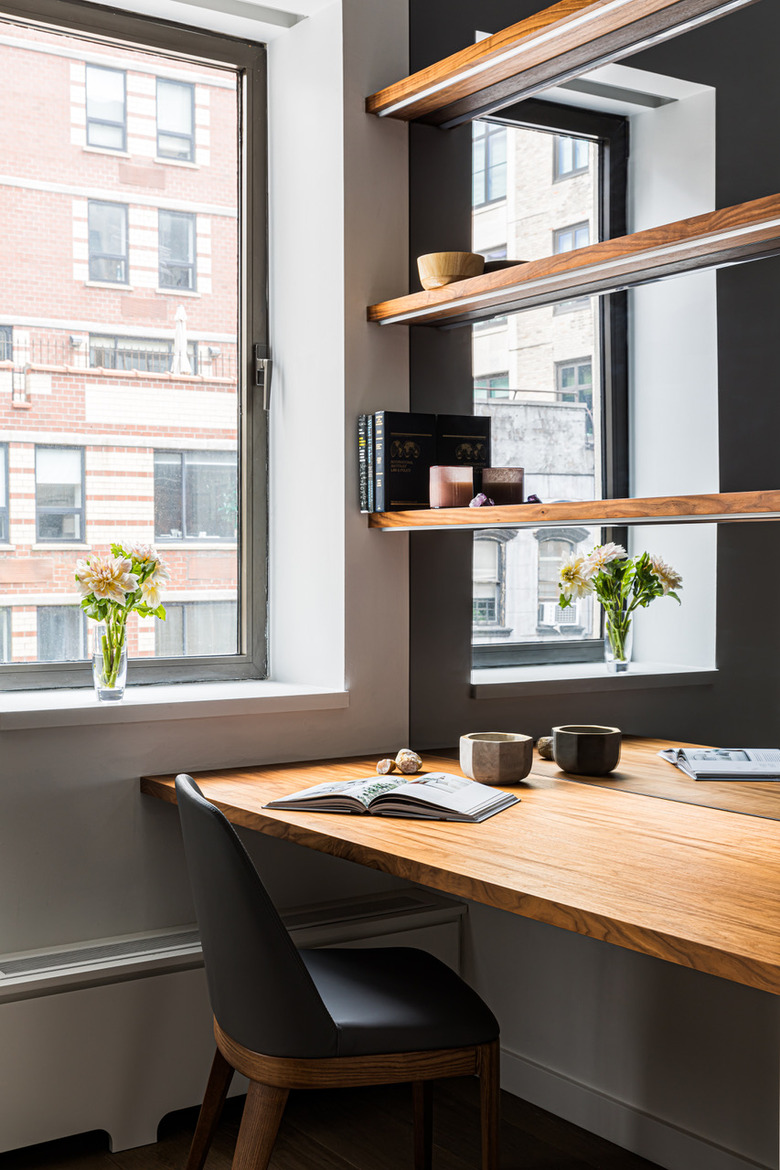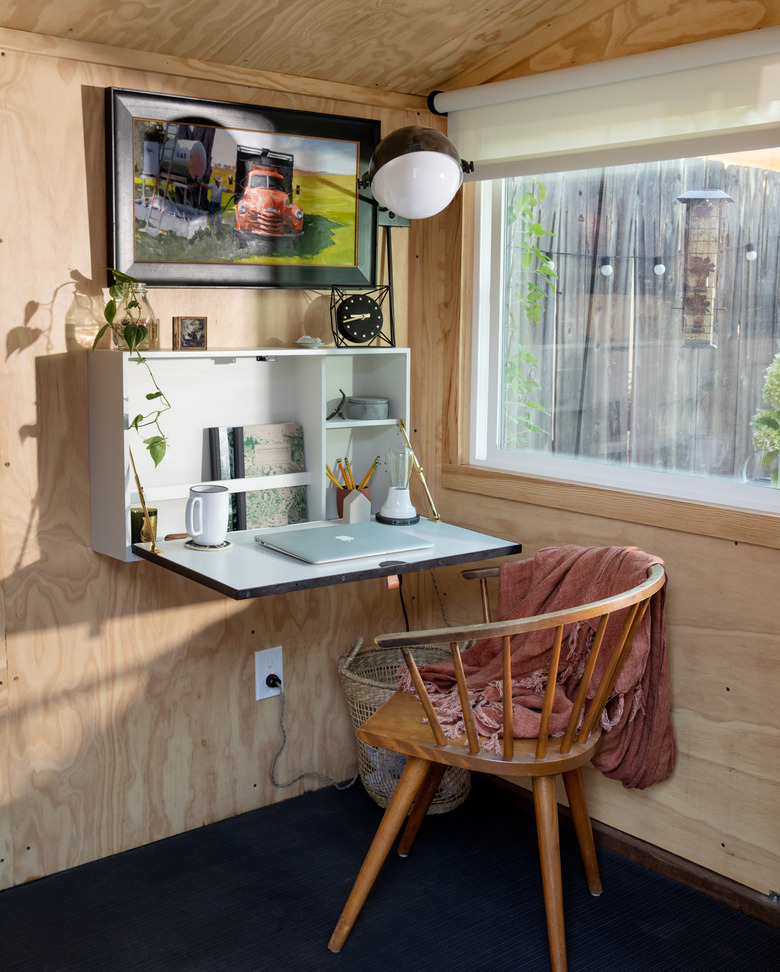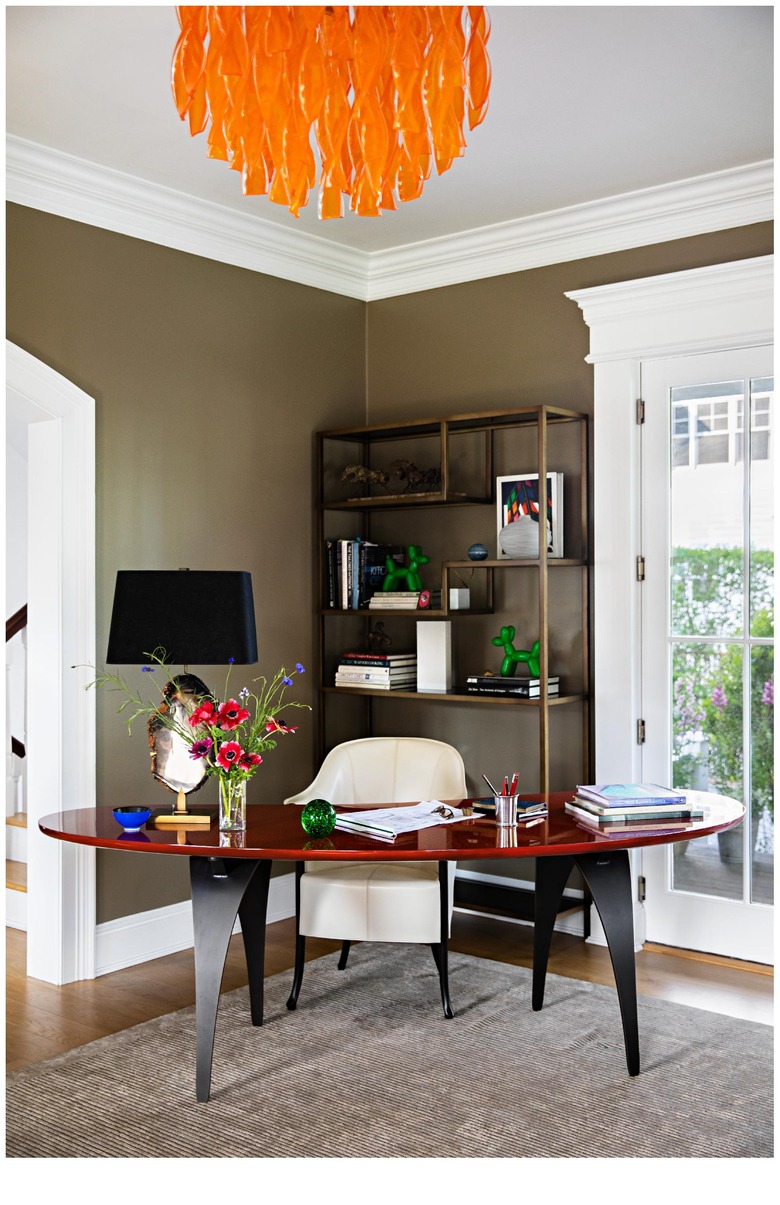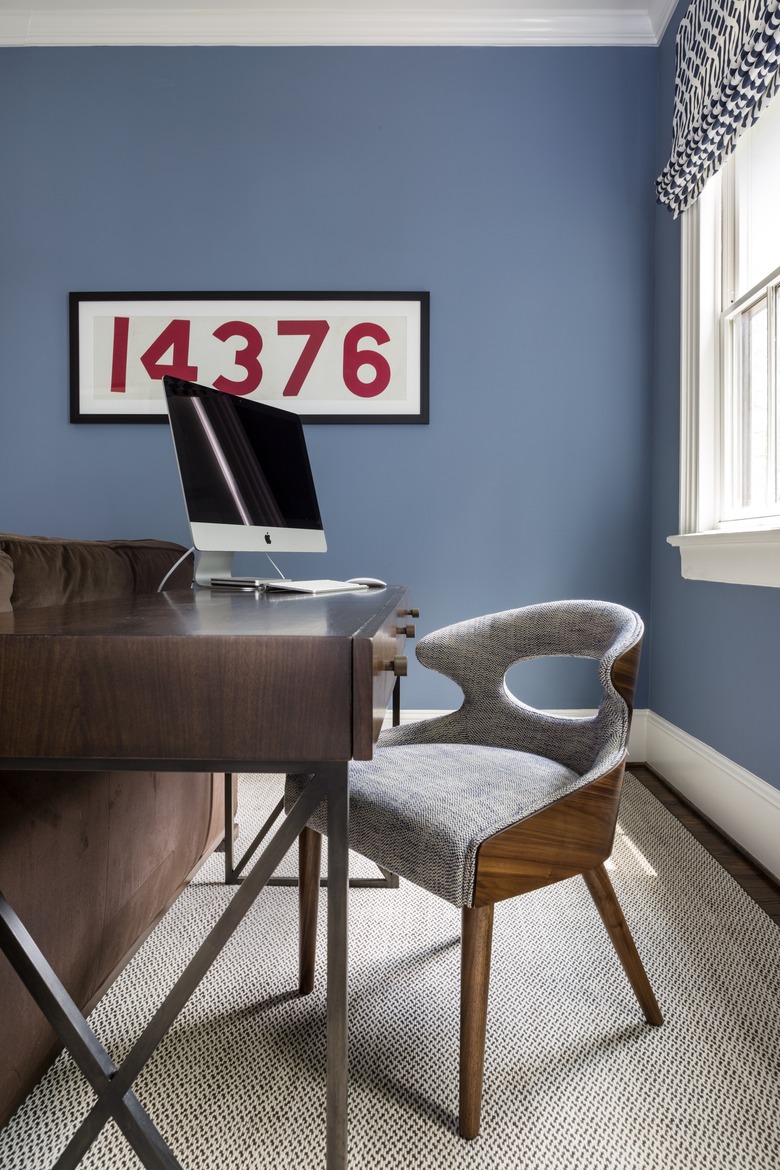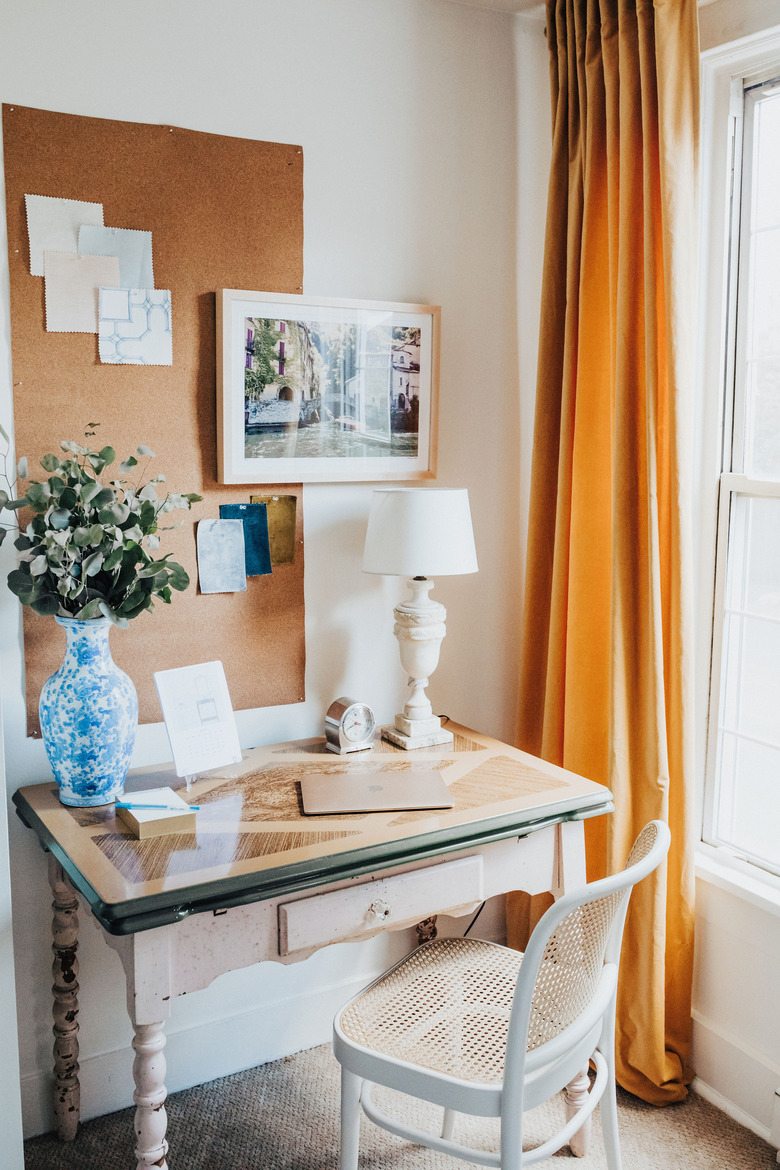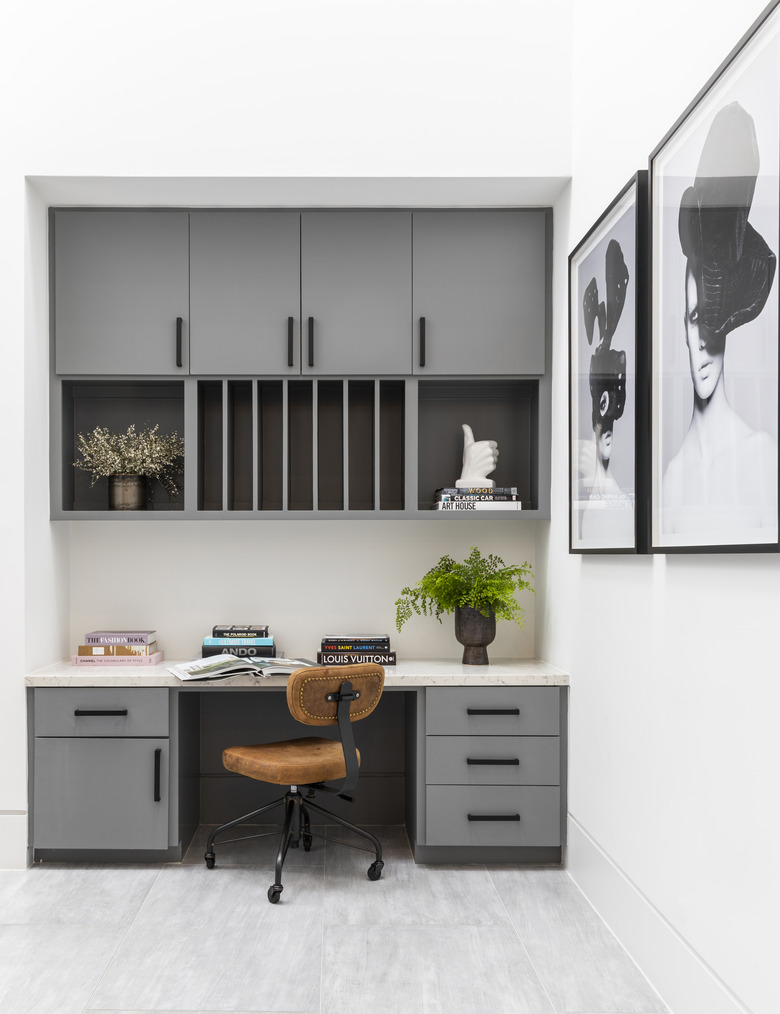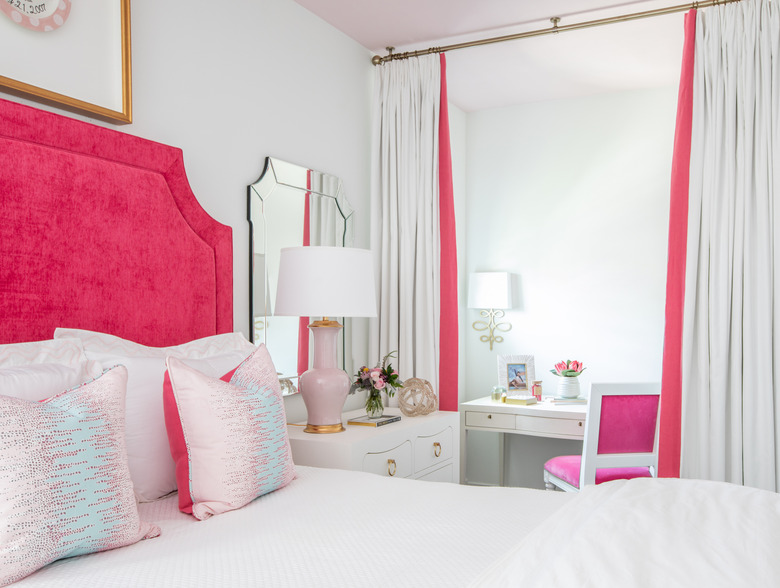10 Designer-Approved Ways To Create A Home Workstation In A Small Space
Carving out a designated workspace in a small home is never easy. Fortunately, with the right furniture items and a little designer insight, creating a workstation at home — even if you don't have a spare room — is a breeze. To prove our point, we asked a few of our interior designer friends for advice, and here's what they had to say.
1. Install a floating desk on an empty wall.
1. Install a floating desk on an empty wall.
According to Becky Shea, wall mounted desks are a perfect opportunity to give you a workspace without committing to a permanent fixture. "The only caveat is you really need to be an organized, minimalist worker in order to make proper use of its space saving abilities," she says. "We usually design a little hidden storage space nearby so that loose items like pens, documents & your laptop can be easily stored and retrieved."
2. Find a desk that doubles as a nightstand.
2. Find a desk that doubles as a nightstand.
Why waste space on a boring bedside table when you can have one that moonlights as a workstation? "A desk that pulls double duty as a nightstand is a great way to squeeze in a workspace in a small bedroom," Marika Meyer says. "Incorporate a small-scale desk that provides enough space for office supplies and bedside essentials."
3. Transform a cramped corner with a desk and wall-mounted shelving.
3. Transform a cramped corner with a desk and wall-mounted
shelving.
If you ask Amelia Strat of Kroesser + Strat Design, even the tightest of corners in your home is teeming with workspace potential. "In a recent project, we designed a desk space in our client's living room that doubles as a bar area," she explains. "We added a desk and wall-mounted shelving with LED strip lights, as well as a smoked glass backsplash to dress it up a bit. Our clients love it — and when they're finished with work, they can just reach right up and grab a drink!"
4. Buy a fold-out workstation.
4. Buy a fold-out workstation.
If you aren't already hip to drop-leaf desks, then Julie Hawkins of Hawkins Interiors says that now is the time to smarten up. "Since I'm living in a small house, I had to find a desk option that could be put away when not in use," she says. "I found this folding wall desk that fits perfectly, plus you can use it as a shelf when it's folded up."
5. Try a secretary desk.
5. Try a secretary desk.
According to Marie Flanigan, a vintage secretary desk is a great solution for a small space, because it can function in a myriad of ways. "Utilize the desk while you're working from home, storing your monitor, laptop, and office supplies," she says. "Consider placing it in an entryway, so you can also store commonly used materials like mail, stamps, and keys."
6. Place a kidney-shaped desk in a tight corner.
6. Place a kidney-shaped desk in a tight corner.
A curved desk can turn a cramped corner into a proper workstation in no time. "The kidney shape design not only makes it easy to get around, but also presents a gracious arc into the room," says Karen Williams of St. Charles New York. "Mount an open shelf to the wall to create room for storing printers, books, and other home office accessories."
7. Consider a slim desk that moonlights as a sofa table.
7. Consider a slim
desk that moonlights as a sofa table.
Believe it or not, Marika Meyer says that a desk with a more narrow depth can work both as a sofa back table and a workspace in a room. "Look for a sleek, slim desk that can deftly hide behind the sofa when not in use," she advises.
8. Use a side table as a desk.
8. Use a side table as a desk.
Megan Hopp of Megan Hopp Design says that a proper desk isn't your only option for a workspace. "I am a big fan of using smaller tables as desks," she says. "For example, I found a vintage enamel top kitchen table that I am currently using as a desk in my own WFH set up, because it is compact, charming and flexible for future use in a variety of ways."
9. Put a desk at the end of your hallway.
9. Put a desk at the end of your hallway.
When you don't have a proper home office, Nina Magon of Contour Interior Design suggests creating a designated work area in your hallway. "Add a desk to the dead-end of a hallway to utilize an otherwise wasted space," she says. "You can also add some shelving for storage above to keep your work materials organized and tucked away so it does not interrupt the flow of the rest of your home."
10. Use curtains to delineate a workspace.
10.
Use curtains to delineate a workspace.
Don't have a spare room to work from home in? No problem. Rachel Cannon says you can hang curtains to designate a distinct workstation nook in a room. "Whether it's a window alcove or a bedroom corner, install draperies that act as a partition to section off a work area."
